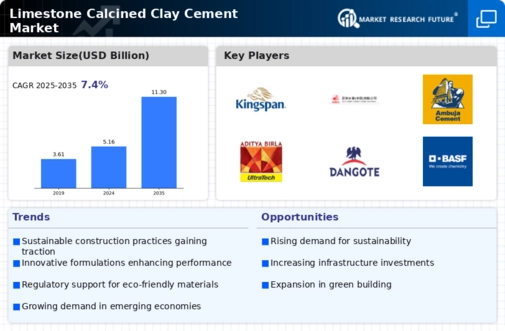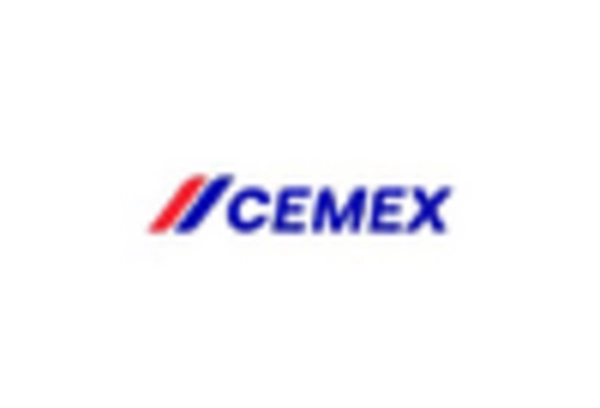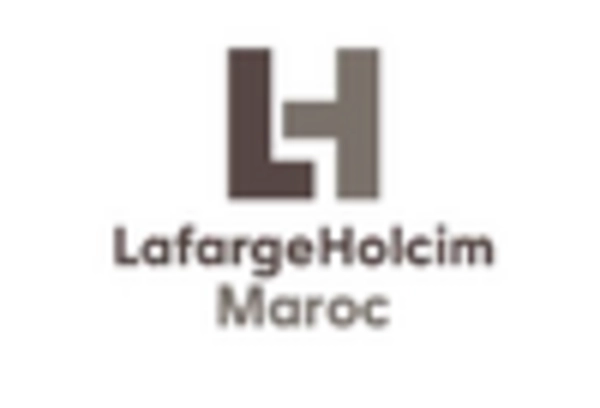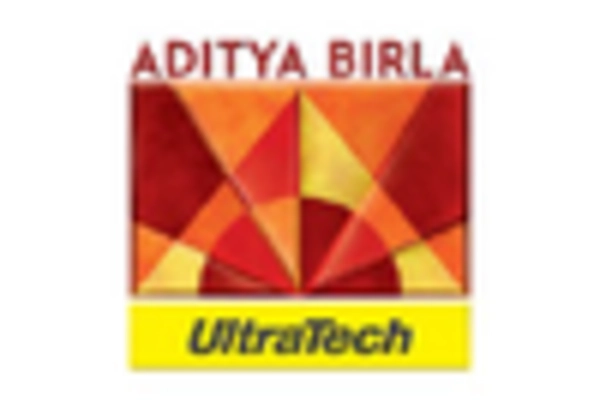Cost-Effectiveness
The Limestone Calcined Clay Cement Market is also benefiting from the cost-effectiveness of limestone calcined clay cement. This alternative cement not only reduces the reliance on traditional materials but also lowers production costs. The raw materials required for limestone calcined clay cement are often more abundant and less expensive than those for conventional cement. As construction projects seek to optimize budgets without compromising quality, the economic advantages of limestone calcined clay cement become increasingly appealing. This cost-effectiveness is likely to attract more stakeholders to the market, thereby stimulating growth in the Limestone Calcined Clay Cement Market.
Regulatory Support
Regulatory frameworks are increasingly favoring the adoption of low-carbon materials, which is beneficial for the Limestone Calcined Clay Cement Market. Governments are implementing policies that encourage the use of alternative cements to reduce the carbon footprint of construction activities. For instance, various regions have introduced incentives for projects that utilize sustainable materials, including limestone calcined clay cement. This regulatory support not only enhances market growth but also fosters innovation within the industry. As regulations become more stringent regarding emissions, the demand for limestone calcined clay cement is expected to increase, positioning it as a viable alternative in the construction sector.
Sustainability Focus
The Limestone Calcined Clay Cement Market is experiencing a notable shift towards sustainable construction practices. This trend is driven by increasing awareness of environmental issues and the need for eco-friendly building materials. Limestone calcined clay cement, which utilizes natural resources and reduces carbon emissions, aligns well with these sustainability goals. The cement industry is responsible for a significant portion of global CO2 emissions, and the adoption of limestone calcined clay cement can potentially reduce these emissions by up to 30%. As construction companies and governments prioritize sustainability, the demand for this innovative cement is likely to rise, further propelling the Limestone Calcined Clay Cement Market.
Growing Construction Sector
The expansion of the construction sector is a significant driver for the Limestone Calcined Clay Cement Market. As urbanization continues to rise, the demand for new infrastructure, residential buildings, and commercial spaces is increasing. Limestone calcined clay cement, with its sustainable properties and performance benefits, is well-positioned to meet the needs of this growing sector. Market data suggests that the construction industry is projected to grow at a steady rate, which will likely lead to an increased demand for innovative materials like limestone calcined clay cement. This growth trajectory indicates a promising future for the Limestone Calcined Clay Cement Market.
Research and Development Initiatives
Ongoing research and development initiatives are playing a crucial role in advancing the Limestone Calcined Clay Cement Market. Academic institutions and industry stakeholders are collaborating to explore the properties and applications of limestone calcined clay cement. Recent studies indicate that this type of cement can achieve comparable strength and durability to traditional Portland cement while offering lower environmental impact. The continuous innovation in formulation and application techniques is likely to enhance the performance characteristics of limestone calcined clay cement, making it a more attractive option for builders and developers. This focus on R&D is expected to drive market expansion and adoption.

















Leave a Comment